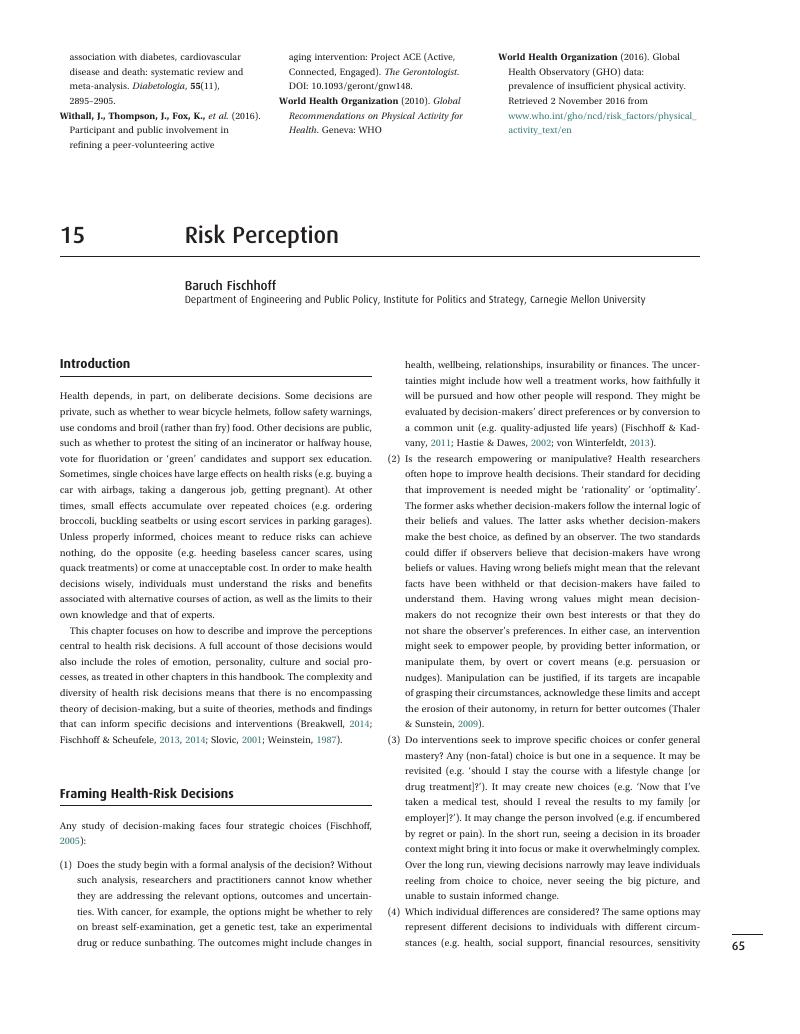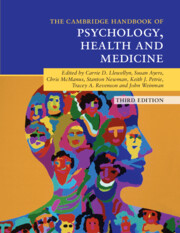15 - Risk Perception
from Theme 3: - Health Behaviours
Published online by Cambridge University Press: 05 June 2019
Summary

- Type
- Chapter
- Information
- Cambridge Handbook of Psychology, Health and Medicine , pp. 65 - 68Publisher: Cambridge University PressPrint publication year: 2019

